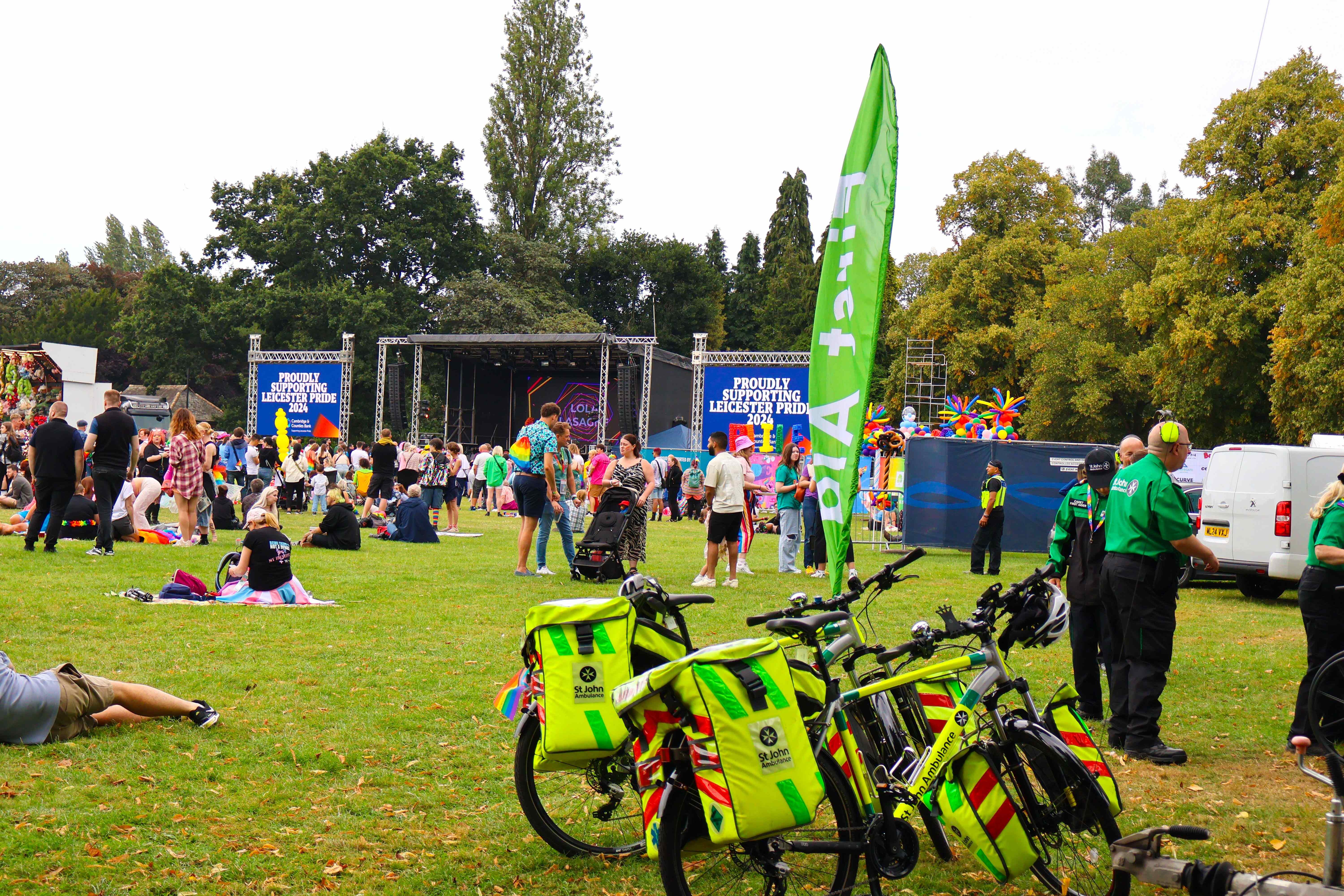
Thursday 19 June 2025: St John Ambulance today launches its summer first aid awareness campaign after new research reveals that more than half of adults surveyed in England (55%)* do not know the difference between life-threatening heat stroke, which requires a 999 call, and heat exhaustion, which can be treated by cooling and hydrating a patient.
The health charity’s research shows that only one third (31%) of people aged 55 and over recognise the critical difference between these conditions compared to nearly two thirds (63%) of young people aged 16 to 24.
The health charity’s survey also found:
- Almost one in 10 (9%) believe heat exhaustion is not serious, despite the risk of it progressing to life-threatening heat stroke if left untreated.
- One in four people (25%) have had their summer plans disrupted by heat-related symptoms, such as dehydration or sunburn.
- Four in 10 people (41%) are unaware that some medications for common long-term conditions, including certain antidepressants, can increase the risk of heat-related illness.
- Just under a third (29%) of respondents have helped someone experiencing a heat-related condition, while 14% weren’t sure if they had – suggesting a lack of confidence in recognising symptoms.
The campaign aims to improve public understanding of how to prevent, identify and treat heat-related conditions, especially as the UK braces for another summer of extreme temperatures.
The survey also revealed widespread misconceptions about how to treat serious conditions like heat stroke. Many respondents believed giving a patient water to drink was the correct next step after calling emergency services, when in fact cooling the person with water on their skin and fanning is more effective.
*Survey of 1,002 adults across England conducted by Censuswide for St John Ambulance in June 2025.
How to tell the difference between heat exhaustion and heat stroke
Heat exhaustion is caused by a loss of salt and water from the body, usually through excessive sweating. It develops slowly and usually happens to people who aren’t used to hot, humid weather. If you’re at a festival and it’s very hot, or have spent a long time in the sun, it’s easy to suffer from heat exhaustion.
Typical symptoms include headache, dizziness and confusion, loss of appetite and feeling sick, sweating with pale clammy skin, cramps in the arms, legs and stomach, and fast, weakening pulse and breathing.
Patients need to be helped to lie down in a cool place with legs raised, given lots of water or isotonic sports drinks, and have their breathing, pulse and responsiveness monitored.
Heat stroke is characterised by someone having a very high internal temperature (40C and above) and a decreased level of consciousness. This might mean they are confused, unresponsive or even aggressive.
To help a patient, you need to call 999 immediately. They then need to be taken out of the sun or away from the heat source, have all extra clothing layers removed, ideally down to their underwear, sprayed with misted water or have water poured on them and fanned to promote evaporation. Heat stroke can be life threatening.
Lydia Scroggs, Head of Clinical Strategy & Policy at St John Ambulance, said:
Just over half of respondents weren’t confident they could tell the difference between heat stroke and heat exhaustion – a distinction that, if understood, could save someone's life.
We also found that older people, while more confident in managing their health in the sun, were less aware of the risks posed by certain medications. This is most concerning, given that both older adults and young children are more vulnerable to heat-related illnesses, so extra precautions are essential.
St John Ambulance is urging the public to familiarise themselves with the signs of heat exhaustion and heat stroke, and to learn the correct first aid steps to take. The charity offers free advice and resources on its website to help people stay safe during hot weather.
Read more about first aid guidance on heat-related conditions, or make a donation to enable St John volunteers to continue to keep people safe in hot weather.


